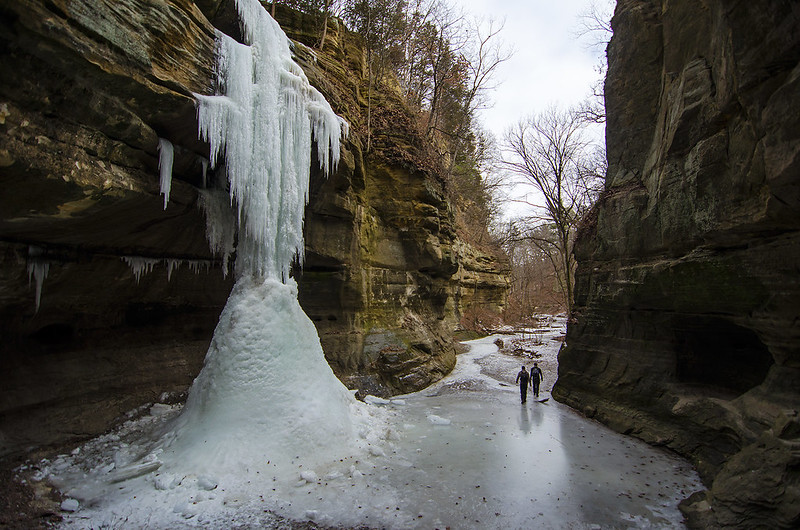
Continuing our hike through the dunes and blowouts of Warren Dunes State Park in Southwest Michigan, we headed toward Lake Michigan from the big blowout dune. Following trails created by previous visitors (so we did not damage the Marram Grass, or cause unnecessary erosion) we walked on a narrow ridge of the interconnected dunes.

This relatively low ridge sat in the valley between two of the taller dunes in the area, but still provided a great view of the unusual landscape created by Lake Michigan and Midwestern winds.

On such an unusually warm day for February, the park had its share of visitors. Walking through the great expanse of these dunes, it's difficult to imagine this park feeling crowded - perhaps just the beach in the summer. We came upon visitors now and then, but still felt as though we were relatively alone.

On our way, we hiked past a pair of bald, living dunes. A living dune is a sand dune that continues to move inland. Generally, they are devoid of vegetation, so the roots don't keep the sand from moving. The winds off of Lake Michigan blow the sand up and over the dune, where it falls on the other side, effectively moving the dune inland, one grain at a time. The photograph above shows some of the sand that was blown over the top of the dune is slowly falling to the leeward side. It will eventually fall to the bottom, adding a bit more sand to that side of the dune, and burying anything in it's path.






























